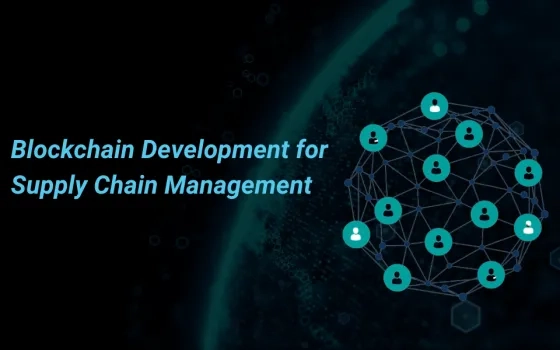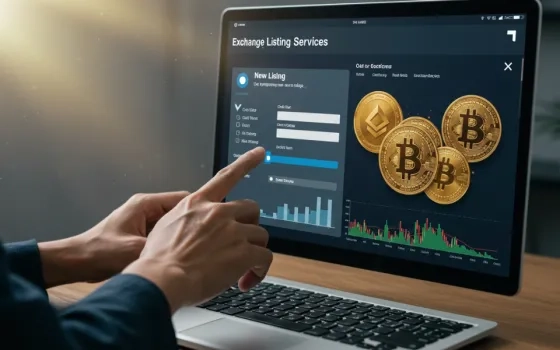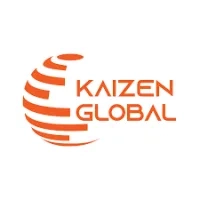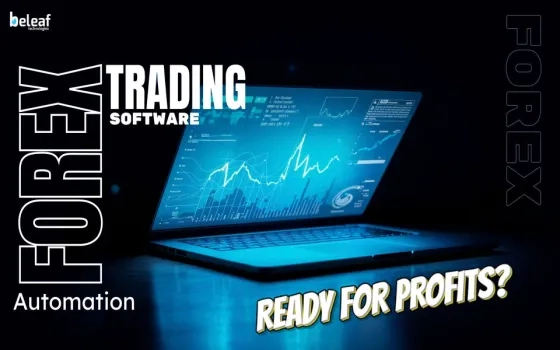Introduction to Blockchain Development for Supply Chain Management:
Blockchain technology has rapidly gained prominence in various industries, offering innovative solutions to longstanding challenges. In the realm of supply chain management, blockchain development has emerged as a game-changing tool. This technology promises to revolutionize the way supply chains operate, ensuring transparency, security, and efficiency. This guide delves into the intricate relationship between blockchain and supply chain management, shedding light on the critical role this technology plays in optimizing the global movement of goods and services.
-
What is Supply Chain Management?
Supply chain management is the intricate web of processes, resources, and activities that ensures the smooth flow of products or services from their point of origin to the end consumer. It encompasses everything from raw material procurement to manufacturing, logistics, distribution, and customer delivery. Efficient supply chain management is paramount for businesses striving to meet customer demands, minimize costs, and remain competitive. In a world where global trade is the norm, supply chains have become increasingly complex, necessitating innovative solutions to enhance visibility, traceability, and security.
-
The Role of Blockchain Development in the Supply Chain
Blockchain technology is set to disrupt traditional supply chain practices by providing a decentralized, immutable ledger for recording and verifying transactions. This innovation eliminates the need for intermediaries and offers a secure, transparent, and tamper-proof system for tracking the movement of goods and information. Smart contracts, a core feature of blockchain software development, can automate various supply chain processes, reducing errors and delays. Moreover, blockchain development can enhance trust among stakeholders, prevent fraud, and enable real-time visibility into the supply chain, ultimately improving overall efficiency and customer satisfaction.
This guide aims to provide a comprehensive understanding of blockchain development's pivotal role in modern supply chain management. It will explore the various ways in which blockchain technology can be applied to optimize supply chain processes, increase security, and foster collaboration. Whether you are a business leader, a technology enthusiast, or a supply chain professional, this guide will equip you with the knowledge needed to leverage blockchain's potential in transforming and enhancing supply chain operations.
Understanding Blockchain Technology
Blockchain technology consulting is a revolutionary concept that has transformed the way data is stored, secured, and verified. At its core, a blockchain is a decentralized, distributed ledger that records transactions across multiple computers in a tamper-proof manner. This technology has applications in various industries, from finance to supply chain and beyond. Understanding the fundamental principles of blockchain is crucial for anyone looking to leverage its potential for innovation and security.
-
Blockchain Development Basics
Blockchain development involves the creation and maintenance of blockchain networks. Developers design and implement the protocols, consensus mechanisms, and data structures that underpin these networks. They also ensure the security and scalability of the blockchain developers. A strong grasp of data structures, cryptography, and distributed systems is essential for successful blockchain development.
-
How Blockchain Development Works
Blockchain development relies on a network of nodes, or computers, that work together to validate and record transactions. Each new transaction is grouped into a block, and these blocks are linked together in a chronological chain. Transactions are verified through consensus algorithms, such as proof of work or proof of stake. Once verified, they become a permanent part of the blockchain. This transparent and immutable ledger is the backbone of blockchain technology.
-
Types of Blockchain Development
There are several types of blockchain development, each with its unique characteristics. Public blockchains are open to anyone and are often associated with cryptocurrencies like Bitcoin. Private blockchains are restricted to authorized participants and are commonly used in enterprise settings. Consortium blockchains involve a group of organizations working together, and hybrid blockchains combine elements of both public and private blockchains. Choosing the right type of blockchain development is essential for the specific needs of a project.
-
Smart Contract Development
Smart contracts are self-executing agreements with the terms directly written into code. These contracts run on blockchain networks and automatically execute when predefined conditions are met. Smart contract development involves writing and deploying code that can automate various processes, from financial transactions to supply chain operations. Solidity, Ethereum's programming language, is commonly used for smart contract development. Understanding how to create, deploy, and secure smart contracts is a key aspect of blockchain development.
Benefits of Blockchain Development in Supply Chain Management
Blockchain development has brought about a transformative wave of benefits in the realm of supply chain management, revolutionizing how goods and information move across the global marketplace. This section highlights some of the key advantages that blockchain technology brings to the world of supply chains.
-
Transparency and Traceability
One of the primary advantages of blockchain in supply chain management is the enhanced transparency and traceability it offers. Every transaction and movement of goods is recorded in a decentralized, immutable ledger. This enables all stakeholders to access a complete and unchangeable history of products' journeys, reducing fraud, errors, and disputes. It empowers consumers to trace the origin of products, promoting responsible sourcing and ethical practices.
Blockchain technology is renowned for its robust security features. Information stored on the blockchain is cryptographically secured, making it extremely difficult for unauthorized parties to tamper with or manipulate data. This heightened security not only protects against fraud but also fosters trust among participants in the supply chain. Parties can rely on the accuracy of the information recorded on the blockchain, reducing the need for intermediaries and audits.
-
Efficiency and Cost Reduction
Blockchain development streamlines supply chain processes by automating record-keeping and eliminating manual, paper-based systems. Smart contracts, a core feature of blockchain development, automate and enforce predefined rules and conditions for transactions, reducing delays and errors. This increased efficiency results in significant cost reductions. By minimizing the need for intermediaries and reducing administrative overhead, businesses can optimize their operations and cut operational expenses.
Real-world case studies provide tangible evidence of the benefits of blockchain in supply chain management. Numerous companies and industries have already adopted blockchain technology to enhance their operations. For example, the food industry has used blockchain to trace the origins of contaminated products quickly, protecting public health. Meanwhile, logistics companies have improved tracking and inventory management using blockchain. Case studies illustrate how blockchain development company is making a meaningful impact on supply chains, inspiring further adoption and innovation across various sectors.
Key Component of Supply Chain Blockchain Development
Supply chain blockchain development encompasses several key components that are essential to building a robust and effective blockchain system tailored for the supply chain industry. These components serve as the building blocks for creating transparent, secure, and efficient supply chain solutions.
The distributed ledger is the fundamental component of supply chain blockchain development. It comprises a network of interconnected nodes that collectively maintain a shared database. This ledger records all transactions and data relevant to the supply chain, ensuring that information is securely stored and accessible to all authorized participants. The decentralized nature of the ledger enhances data integrity and transparency.
Consensus mechanisms are the protocols that ensure that all participants in the blockchain network agree on the validity of transactions and the state of the ledger. Popular consensus mechanisms include Proof of Work (PoW) and Proof of Stake (PoS). In a supply chain blockchain development company, selecting an appropriate consensus mechanism is crucial to determine how trust and security are maintained within the network.
-
Decentralized Apps (DApps) Development
Decentralized applications, or DApps, are software applications that run on a blockchain network. In the context of supply chains, DApps can be designed to automate processes, track goods, and facilitate secure data sharing among supply chain participants. DApps provide the user interface for interacting with the blockchain and can significantly improve efficiency and transparency in supply chain management.
-
Tokenization (Token Bridge / Token Migration)
Tokenization involves representing physical or digital assets as tokens on the blockchain. In a supply chain blockchain development company in the USA, tokenization can be used to create digital representations of physical products, making it easier to track and verify the authenticity of goods. Token bridges and token migration mechanisms facilitate the movement of tokens across different blockchain networks, allowing interoperability and data exchange between different parts of the supply chain.
These key components are pivotal in the development of a supply chain blockchain system that enhances transparency, trust, and efficiency throughout the supply chain, providing stakeholders with real-time visibility and data integrity. By integrating these components effectively, supply chain custom blockchain solutions can address the challenges and complexities of modern supply chain management.
Designing a Blockchain-Based Supply Chain System
The successful implementation of a blockchain-based supply chain system involves a series of strategic steps. These steps are critical in ensuring that the system meets the specific needs of the supply chain, enhancing transparency, security, and efficiency. Here are the key phases in designing such a system:
The initial step in designing a blockchain-based supply chain system is to identify the specific use cases and objectives. Determine the pain points and challenges within the supply chain that blockchain technology can address. Common use cases include traceability of products, provenance verification, anti-counterfeiting measures, and optimizing logistics. Identifying these use cases is crucial in shaping the overall design and functionality of the system.
Once the use cases are identified, the next step is to map the data and processes within the supply chain. This involves understanding how information flows, where data is collected, and how it's currently stored and shared. Mapping out the existing processes and data structures helps in defining how the blockchain will integrate into the supply chain. It also aids in determining what data should be stored on the blockchain and what should remain off-chain.
-
Choosing the Right Blockchain Development Platform
Selecting the appropriate blockchain development platform is a critical decision. Consider factors like the type of blockchain (public, private, consortium), the consensus mechanism (Proof of Work, Proof of Stake), and the programming languages supported. For supply chain applications, platforms like Ethereum, Hyperledger Fabric, and Corda are commonly used. The choice should align with the specific requirements and use cases of the supply chain.
-
Integrating with Existing Systems
Incorporating blockchain technology into an existing supply chain often involves integration with legacy systems and databases. Ensure that the blockchain system can seamlessly interact with these systems through APIs or middleware. This integration is essential for data flow and communication between the blockchain and other supply chain components.
To maximize the benefits of the blockchain-based supply chain system, it's vital to carefully plan each of these steps, ensuring that the solution aligns with the unique needs of the supply chain. The design should focus on enhancing transparency, security, and efficiency while addressing specific use cases and ensuring smooth integration with the existing ecosystem.
Developing Smart Contracts for the Supply Chain
Smart contracts play a pivotal role in modernizing and enhancing supply chain management. They automate various processes, reduce errors, and increase transparency and trust among stakeholders. Here is a breakdown of the key steps in developing smart contracts for the supply chain:
-
What are Smart Contracts?
Smart contracts are self-executing agreements with the terms and conditions directly written into code. They run on blockchain networks and automatically execute when predefined conditions are met. These contracts eliminate the need for intermediaries, such as banks or legal entities, by enabling trustless and secure transactions. In the context of the supply chain, smart contracts can facilitate the automatic execution of tasks like payment upon delivery tracking of goods and quality assurance.
-
Use Cases for Smart Contracts
Smart contracts offer a wide array of use cases within the supply chain. Some examples include:
Automated Payments: Smart contracts can trigger payments to suppliers or logistics providers as soon as products are delivered and verified.
Asset Tracking: They can monitor and record the movement of goods, providing real-time tracking and traceability.
Quality Assurance: Smart contracts can incorporate IoT devices and sensors to check the quality of products during transit, automatically flagging discrepancies.
Understanding the specific use cases within your supply chain is crucial for effective smart contract development.
-
Coding Smart Contract Development
Developing smart contracts involves writing code that defines the rules conditions and actions to be taken when certain events occur. Ethereum's Solidity is a popular programming language for smart contract development. Developers need to have a strong understanding of blockchain concepts, data structures, and security considerations. The code must be precise, as smart contracts are immutable and any errors can have significant consequences.
Thorough testing is essential before deploying smart contracts in a production environment. Developers should conduct unit tests, integration tests, and security audits to identify and address potential vulnerabilities. Once the smart contract code is deemed error-free and secure, it can be deployed to the blockchain network. After deployment, the contract's address is recorded on the blockchain development and it becomes accessible for participants to interact with.
Developing smart contracts for the supply chain is a complex but rewarding process. These contracts have the potential to streamline operations, reduce costs, and enhance trust among supply chain participants. However, meticulous coding, testing, and ongoing maintenance are crucial to ensure their successful implementation and functionality.
Security and Privacy Considerations
In the world of supply chain blockchain security and privacy are paramount. The decentralized and transparent nature of blockchain development services provides a strong layer of security, but it's not immune to threats. Organizations must consider factors like secure access control encryption and identity management to safeguard their blockchain networks. Additionally, privacy concerns must be addressed to protect sensitive data. Careful planning and adherence to best practices are essential to maintain the integrity of the supply chain blockchain while keeping sensitive information out of unauthorized hands.
-
Cybersecurity in Supply Chain Blockchain
Cybersecurity is a cornerstone of supply chain blockchain implementation. The distributed nature of blockchain brings a level of security, but it doesn't negate the need for additional protective measures. Secure network infrastructure, regular security audits, and robust encryption are crucial for protecting data and transactions. Furthermore, vigilant monitoring and rapid response to potential threats are essential in maintaining the security and trustworthiness of the supply chain blockchain.
-
Data Privacy and GDPR Compliance
Data privacy is a growing concern in supply chain blockchain. With the advent of regulations like the General Data Protection Regulation (GDPR), organizations must ensure compliance with privacy laws while utilizing blockchain technology. Balancing the transparency benefits of blockchain with GDPR's requirements can be complex. Techniques like zero-knowledge proofs and private channels can be employed to protect sensitive data while still benefiting from the blockchain's advantages in supply chain management.
-
Supply Chain Vulnerabilities
Supply chains are not immune to vulnerabilities and blockchain technology aims to mitigate some of these risks. However, vulnerabilities still exist such as the potential for counterfeit products or fraudulent transactions. Blockchain can enhance traceability and verification reducing these risks but it's not a silver bullet. A holistic approach to supply chain risk management is essential, incorporating blockchain as a powerful tool to address vulnerabilities while acknowledging that other threats may persist and require attention.
Regulatory Compliance
Regulatory compliance refers to an organization's adherence to laws, regulations, and industry standards relevant to its operations. In the context of blockchain and supply chain management, compliance ensures that data handling, security, and processes align with legal requirements. Meeting these standards is vital to avoid legal consequences, ensure data privacy, and build trust among stakeholders.
-
Legal and Regulatory Challenges
The integration of blockchain developments into supply chain management presents many legal and regulatory challenges. Issues related to data privacy intellectual property rights cross-border transactions and smart contract enforceability are among the complexities. Dealing with these challenges requires a deep understanding of local and international regulations and may involve adopting blockchain systems to meet legal requirements without compromising their core benefits.
Compliance frameworks provide a structured approach to address regulatory challenges in blockchain-based supply chains. These frameworks guide data protection record-safety and reporting requirements. For example, the GDPR (General Data Protection Regulation) provides a framework for data privacy compliance in Europe while the United States has its regulatory frameworks such as HIPAA (Health Insurance Portability and Accountability Act) in healthcare. Compliance frameworks help organizations with their blockchain development systems with specific legal orders.
-
Case Studies in Regulatory Compliance
Real-world case studies in regulatory compliance within supply chain blockchain systems demonstrate the importance of adhering to legal and industry-specific regulations. Examples may include companies successfully navigating data protection laws, ensuring the authenticity of products through blockchain, and complying with financial regulations for blockchain-based payment systems. These case studies offer valuable insights into the practical application of regulatory compliance and how it benefits both organizations and their stakeholders.
Implementing Blockchain in Your Supply Chain
The successful integration of blockchain technology into your supply chain requires a well-thought-out strategy and a systematic approach. Here are the key steps to consider:
-
Building a Proof of Concept (PoC)
Start with a proof of concept to validate the feasibility and benefits of blockchain in your supply chain. Identify a specific use case, such as product traceability, and develop a small-scale blockchain solution. This PoC helps you understand the technology's potential, assess its impact, and gain support from stakeholders.
Once the PoC is successful, scale up your blockchain implementation. Define the scope of your supply chain network and the processes you want to optimize using blockchain. Consider factors like network participants, data volume, and transaction frequency. Choose an appropriate blockchain platform and design a comprehensive architecture that can handle the demands of your supply chain.
Implementing blockchain technology in a supply chain often requires a significant shift in processes and practices. Effective change management is essential to ensure a smooth transition. Provide training and support for employees, partners, and other stakeholders involved. Communicate the benefits of blockchain, address concerns, and encourage collaboration to make the adoption process more seamless.
Establish clear Key Performance Indicators (KPIs) to measure the success of your blockchain implementation. Monitor factors like cost savings, improved efficiency, reduced errors, and enhanced transparency. Regularly assess whether the technology is delivering the expected results. Use this data to make necessary adjustments and refinements to the system.
Implementing blockchain in your supply chain is a significant undertaking that can yield substantial benefits in terms of transparency, security, and efficiency. By following these steps, you can ensure a methodical and successful integration of blockchain technology into your supply chain management.
Challenges and Future Trends
Supply chain blockchain development is at the forefront of technological innovation, but it also faces several challenges and holds promising future trends. Let's explore the current challenges and speculate on what lies ahead:
Integration Hurdles: Integrating blockchain with existing supply chain systems can be complex and costly, requiring time and resources.
Regulatory Compliance: Meeting various global regulations, such as GDPR, while leveraging blockchain's transparency remains a significant challenge.
Standardization: The lack of industry-wide standards hampers interoperability and scalability.
Data Privacy: Balancing the benefits of transparency with data privacy concerns is an ongoing struggle.
Education and Awareness: Many supply chain professionals need education on blockchain's potential and best practices.
-
Future Trends in Supply Chain Blockchain Development
Enhanced Interoperability: Efforts to standardize blockchain interfaces and protocols will boost interoperability, allowing different supply chain networks to communicate seamlessly.
IoT Integration: The integration of IoT (Internet of Things) devices with blockchain will provide real-time data on product conditions, ensuring quality and safety.
Sustainability and ESG: Blockchain can be a powerful tool for tracking and verifying sustainability practices and aligning supply chains with environmental, social, and governance (ESG) goals.
Supply Chain Finance: Blockchain will continue to facilitate supply chain financing by automating payment settlements, reducing working capital requirements, and minimizing fraud.
Quantum-Resistant Blockchain: As quantum computing advances, quantum-resistant blockchain solutions will become essential to maintain data security.
-
Predictions and Speculations
The future of supply chain blockchain development looks promising, with potential widespread adoption as technology matures. We can anticipate increased cooperation between industry players to develop standardized solutions that enhance efficiency and transparency while addressing regulatory concerns. Blockchain's role in sustainable and ethical supply chain management is expected to grow. As it evolves, blockchain technology will adapt to emerging threats, such as quantum computing, ensuring the long-term security and integrity of supply chain data. Overall, supply chain blockchain development is poised for continued growth and innovation.
Conclusion
The integration of blockchain technology into supply chain management holds immense promise for revolutionizing the way goods and information flow across global networks. The future of supply chain management with blockchain is filled with exciting possibilities. As technology continues to mature and industry players collaborate to address current challenges, blockchain's adoption is expected to grow. It will not only streamline operations, reduce costs, and enhance transparency but also play a vital role in achieving sustainability and ethical supply chain practices. By adapting to emerging threats like quantum computing, blockchain will ensure the long-term security and integrity of supply chain data. The future is bright for blockchain in supply chain management, and its innovation potential is boundless.



















